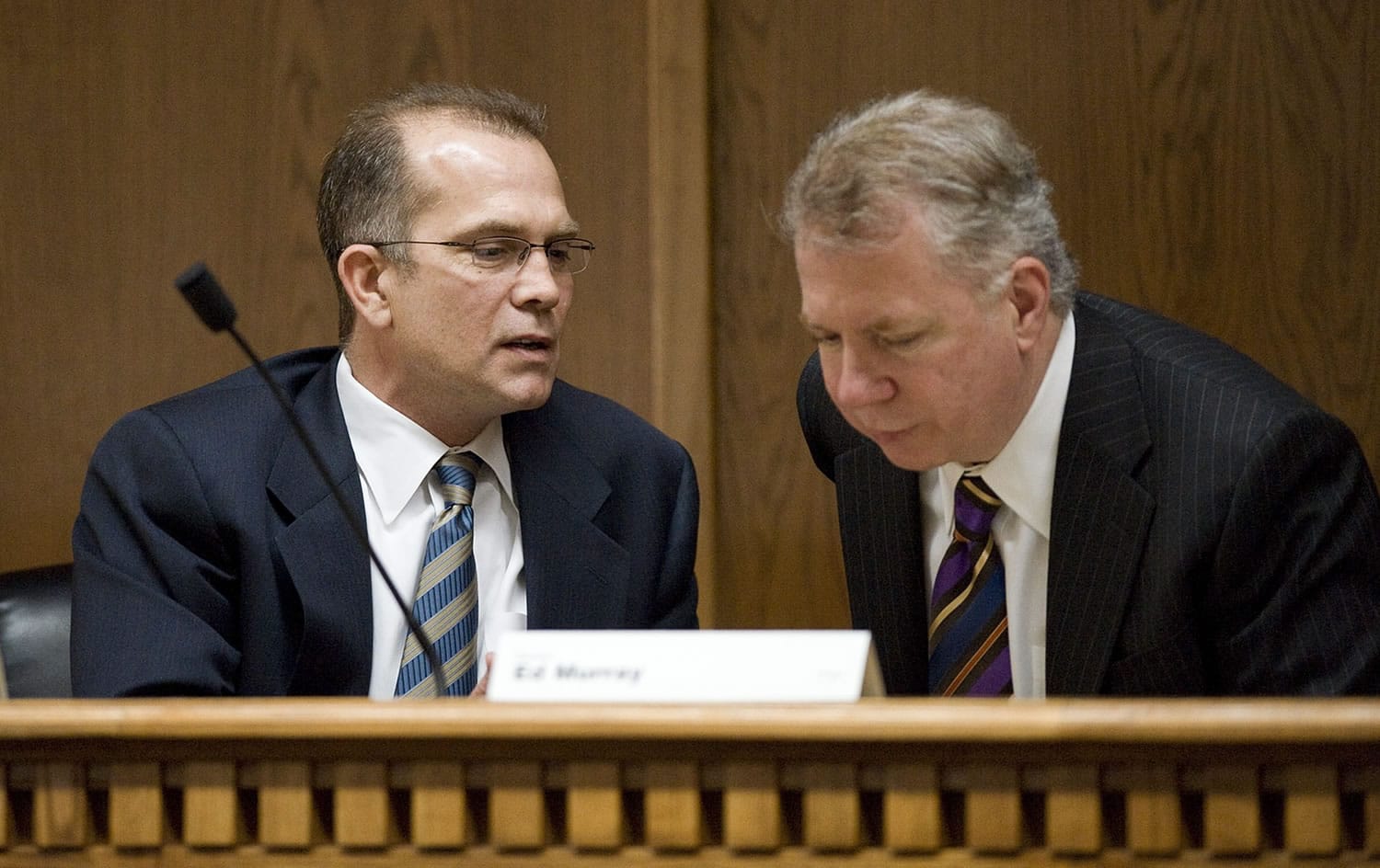It could be years before one of the most popular measures on Tuesday’s ballot has an effect.
It could be never.
No one can predict when the state of Washington will again see a healthy budget surplus.
But when that day comes — when revenues exceed 133 percent of their historical average growth — three-quarters of that surplus revenue will be socked away in the state’s rainy day fund.
Voters approved Senate Joint Resolution 8206, a constitutional amendment that imposes a new level of frugality on future state spending, by a resounding 2-to-1 ratio on Tuesday.
Sen. Joe Zarelli, R-Ridgefield, introduced the measure in January. It drew bipartisan support, including from Senate Democratic Leader Lisa Brown of Spokane. Zarelli is the ranking Republican on the Senate Ways and Means Committee. The two worked together to establish the state’s first rainy day fund in the Constitution in 2007, and Zarelli collaborated with Sen. Ed Murray, the Seattle Democrat who chairs Ways and Means, to develop a bipartisan budget during the 2011 session.
If it had been in place in recent decades, the new savings mandate would have triggered the set-aside of “extraordinary” revenue only twice — in 1989-91, and in 2005-07, when state revenue grew by a stunning 21.4 percent.
Zarelli warned from the beginning that the most recent party wouldn’t last.
“Those were significant periods between 2004 and 2008,” he said in an interview Thursday. “We saw this spike in revenue, mostly from the real estate excise tax and from construction. We had billions of dollars in surplus revenue that hadn’t been projected. What we knew at that time was that there was no way that kind of growth would continue. When we see that happen, even without a recession, we know that eventually the economy will come back to a normal level.”
If the new reserve fund had been in place during the recent years of surplus, he said, it would have put about $1.5 billion extra into the state’s piggy bank and reduced future spending by an equal amount.
Instead, Zarelli said, “we spent to that high expectation. And when revenues come back down, there is no way to maintain that level of spending.”
The original rainy day fund required the Legislature to save 1 percent of its revenue in every two-year budget cycle, in good times or lean. The new measure says, “Let’s recognize these extraordinary times,” Zarelli said. “That is what this accomplishes.”
Resolution 8206 passed the Senate unanimously this year and sailed through the House by a 76-10 vote.
Not everyone agreed it is good public policy, however.
Democratic Reps. Zack Hudgins of Tukwila and Sam Hunt of Olympia argued that at a time when the recession has forced lawmakers to cut more than $10 billion, including basic social services, a large savings account would not have prevented the current budget disaster.
“I’m arguing against putting money into the savings account when you don’t have food on the table, when the kids are going hungry,” Hudgins told The Olympian. “Everybody is for savings. It’s: How much for savings? And do you keep putting it in if the economy is bad?”
Zarelli said the measure was written so that it won’t cripple the state when economic recovery finally arrives.
“Coming out of a recession, when we do get out of it, we’re going to see strong growth,” he said. That is why, for the first biennium that revenues exceed the 133 percent threshold, the state won’t have to make the “extraordinary revenue” transfer.
When will that day come? Zarelli can’t say.
“It may never happen. We may not get to spend all of it,” he said.
What’s clear, he said, is that the state is quickly eating through the existing rainy day fund, which can be tapped with a simple majority vote only when the governor declares an emergency in response to a catastrophe that imperils lives or public safety, or if job growth is predicted to be less than 1 percent.
“There is still money in there, about $230 million,” he said. “That’s what it is there for. But you have to have money at the end of the day, an ending fund balance” of about $500 (million) to $600 million,” he said. “You can’t just balance it to zero.”
Zarelli said he’s gratified that so many voters understood the need to save more for the next rainy day.
Regardless of opposing views about how the state should deal with its revenue crisis, he said, “one thing the majority seems to get is responsibility in budgeting.”
Kathie Durbin: 360-735-4523; http://www.twitter.com/col_politics; kathie.durbin@columbian.com.



